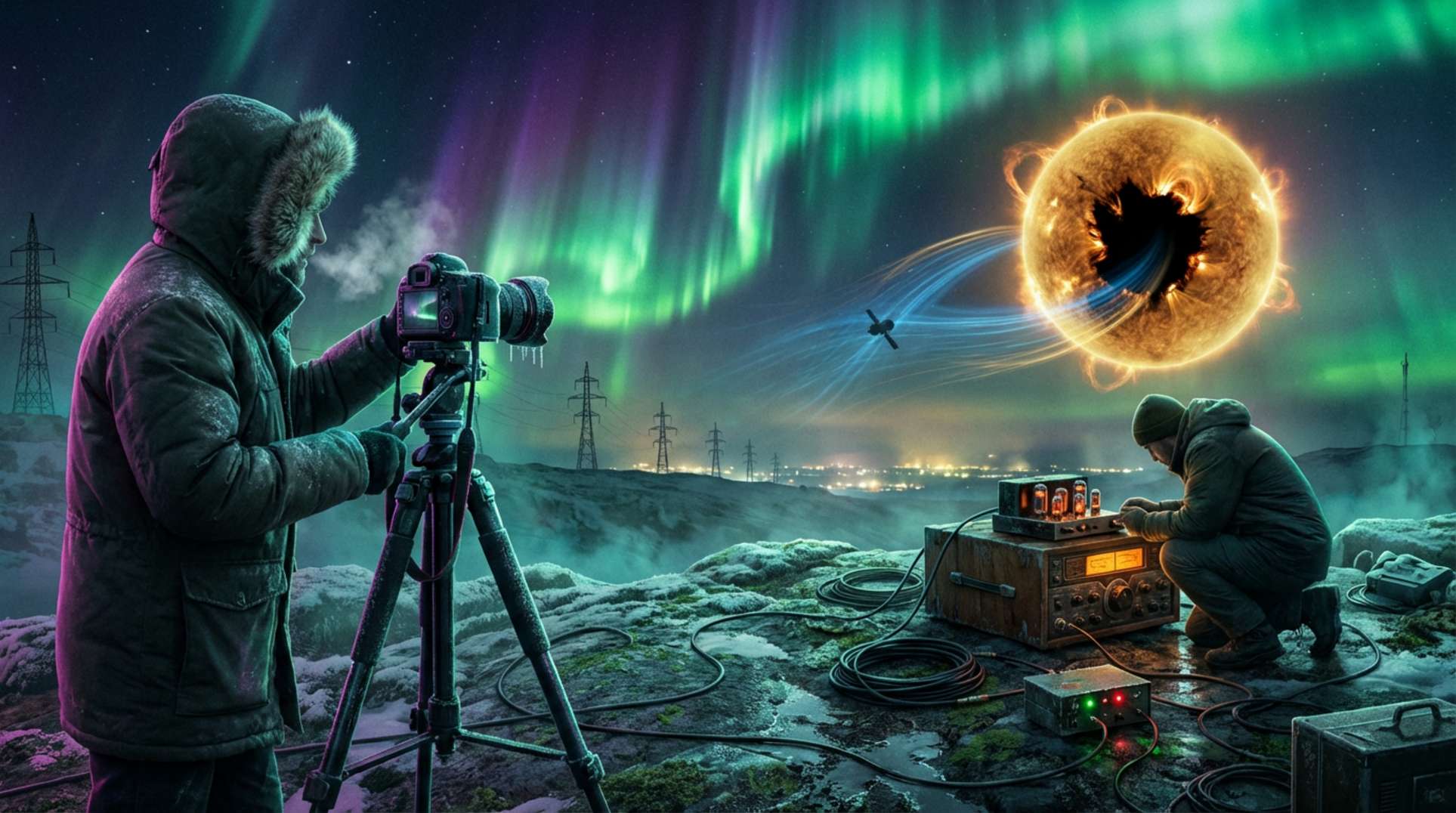Throughout history, people have encountered events that seem to defy logic and scientific understanding. These phenomena often leave us puzzled and searching for answers. In this article, we will delve into some of the most intriguing supernatural events that have baffled scientists and captured the imagination of the public.
Key Takeaways
- The Taos Hum remains a mysterious low-frequency noise heard by some residents in Taos, New Mexico, with no definitive explanation.
- Deja Vu is a puzzling phenomenon where people feel they have already experienced a current situation, with theories ranging from psychological to neurological explanations.
- Near-Death Experiences often involve visions of tunnels and bright lights, but science has yet to fully explain these occurrences.
- The Tunguska Event was a massive explosion in Russia in 1908, believed to be caused by a meteor, but the exact cause is still debated.
- Animal migration, such as the long journeys of birds and sea creatures, continues to baffle scientists, who are still uncovering the mechanisms behind these incredible navigational feats.
The Enigma of the Taos Hum
In the small town of Taos, New Mexico, a mysterious hum has puzzled residents and visitors for years. This low-frequency noise, often described as a hum, whir, or buzz, is heard by only about 2% of the population. The origin of this sound remains unknown, leading to various theories and speculations.
The Mystery of Deja Vu
Deja vu is a French term that means "already seen." It describes the strange feeling of having experienced something before, even though you know you haven’t. This phenomenon is both puzzling and mysterious. Some people think deja vu is a sign of psychic abilities or glimpses of past lives. However, science offers other explanations.
The Phenomenon of Near-Death Experiences
A near-death experience (NDE) is a profound personal event often linked to death or the threat of death. People who have had NDEs frequently describe similar sensations, such as moving through a tunnel, seeing a bright light, or feeling a sense of peace. These experiences are deeply impactful and can change a person’s outlook on life.
Common Elements
Many NDEs share common features, including:
- A feeling of being outside one’s body
- Moving through a tunnel
- Seeing a bright light
- Encountering deceased loved ones
- A sense of peace and calm
Scientific Theories
Scientists have proposed several theories to explain NDEs. Some suggest they are hallucinations caused by the brain’s response to trauma. Others believe they might be due to a lack of oxygen or other physiological changes in the brain during life-threatening situations.
Personal Accounts
Personal stories of NDEs are often compelling. People recount vivid experiences that feel incredibly real. These accounts can be both comforting and transformative, offering a new perspective on life and death.
Near-death experiences remain one of the most intriguing phenomena, challenging our understanding of life and consciousness.
The Unsolved Case of the Tunguska Event
In June 1908, a massive explosion rocked a remote area of Siberia, near the Tunguska River. This event, known as the Tunguska Event, flattened around 770 square miles of forest. The explosion was so powerful that it released energy equivalent to about 15 megatons of TNT, making it one of the most powerful natural explosions in recent history.
The Puzzle of Animal Migration
Animal migration is one of nature’s most fascinating phenomena. Every year, countless species travel thousands of miles across land and sea, often without getting lost. This incredible journey has puzzled scientists for years, leading to various theories and studies to understand how animals navigate such vast distances.
Navigation Theories
Scientists have proposed several theories to explain how animals manage to navigate during their migrations. Some believe that animals use visual landmarks, while others suggest they rely on their sense of smell. More intriguing theories include the idea that animals might use the Earth’s magnetic field to find their way. Despite these theories, the exact mechanisms remain a mystery.
Case Studies
Different species exhibit unique migration patterns. For example, monarch butterflies travel from North America to Mexico, while humpback whales migrate from polar feeding grounds to tropical breeding areas. These journeys are not only long but also perilous, yet these animals manage to complete them year after year. The great migration game is fun games that stretch and sharpen children’s minds. These games are innovative and make learning fun, engaging and enjoyable.
Technological Advances
Recent technological advances have provided new tools for studying animal migration. GPS tracking devices and satellite imagery allow scientists to monitor migration routes in real-time. These technologies have revealed surprising details about migration patterns, helping researchers to better understand this complex behavior.
The study of animal migration not only fascinates scientists but also inspires awe in the general public. The more we learn, the more we realize how much there is still to discover about these incredible journeys.
The Intrigue of Psychic Powers
Psychic powers have fascinated people for centuries. Some believe in these abilities, while others remain skeptical. Psychic abilities include telepathy, clairvoyance, and precognition. These powers are often seen as a way to access hidden knowledge or predict the future.
The Enigma of Earthquake Lights
Documented Cases
Earthquake lights are mysterious flashes of light that appear before or during earthquakes. These lights are often white or bluish and can last for several seconds. Reports of these lights have been around for hundreds of years, but it wasn’t until the 1960s that they were taken seriously by the scientific community. During the Matsushiro earthquakes in Japan, people captured photos of these lights, sparking scientific interest.
Scientific Theories
Scientists have proposed many theories to explain earthquake lights. Some believe they are caused by atmospheric electric fields that become active before an earthquake. Others suggest that the lights are due to piezoelectricity, which is the electric charge that builds up in certain materials when they are under stress. Another theory involves frictional heating, where rocks grinding against each other generate heat and light. Despite these theories, the exact cause remains a mystery.
Challenges in Research
Studying earthquake lights is difficult because they are rare and unpredictable. Scientists can’t easily set up experiments to observe them, making it hard to gather data. Additionally, the phenomenon is often dismissed as a myth or a trick of the light, which complicates serious scientific investigation. However, the continued reports and documented cases keep the interest alive, pushing researchers to find answers.
The anomaly of atmospheric electric fields, possibly associated with earthquakes, is an interesting seismo-electromagnetic phenomenon in the lower atmosphere.
The enigma of earthquake lights remains one of the many natural mysteries that science has yet to fully explain.
The Mystery of the Bermuda Triangle
The Bermuda Triangle, a section of the North Atlantic Ocean off North America, is infamous for the mysterious disappearances of more than 50 ships and 20 airplanes. This area has puzzled scientists, sailors, and conspiracy theorists for decades. Despite numerous investigations, no definitive explanation has been found.
The Puzzle of UFO Sightings
Historical Sightings
Throughout history, there have been numerous reported sightings of unidentified flying objects (UFOs). These sightings range from strange lights in the sky to detailed accounts of flying saucers. Some of the most famous incidents include the Roswell crash in 1947 and the Phoenix Lights in 1997. These events have sparked endless debates and theories about the existence of extraterrestrial life.
Scientific Investigations
Scientists have conducted various investigations to understand these phenomena. While many sightings have been explained as natural or man-made objects, some remain unexplained. For instance, the U.S. government has declassified several reports on UFO sightings, yet many questions remain unanswered. Researchers continue to study these events, hoping to find a logical explanation.
Public Perception
The public’s fascination with UFOs has led to a wide range of beliefs and theories. Some people are convinced that these sightings are proof of alien visitors, while others believe they are simply misidentified objects or hoaxes. The media has played a significant role in shaping these perceptions, often sensationalizing reports to attract attention. Despite the lack of concrete evidence, the mystery of UFOs continues to captivate the imagination of people worldwide.
The enduring mystery of UFO sightings keeps us questioning what might be out there, beyond our understanding.
The Phenomenon of Ghost Sightings
Ghost sightings have fascinated and frightened people for centuries. These supernatural events often involve seeing apparitions or feeling the presence of spirits. While many dismiss these experiences as mere illusions, others believe they are genuine encounters with the afterlife.
The Enigma of Bigfoot
Bigfoot, also commonly referred to as Sasquatch, is a large and hairy human-like mythical creature said to inhabit forests in North America, particularly in the Pacific Northwest. Despite numerous sightings and stories, the existence of Bigfoot remains unproven and continues to be a topic of debate and fascination.
The Mystery of Intuition
Psychological Theories
Intuition, often referred to as a "gut feeling" or a "sixth sense," is a fascinating phenomenon that has puzzled scientists and psychologists alike. Some believe that intuition is a form of subconscious processing, where the brain picks up on subtle cues and patterns without our conscious awareness. This idea suggests that our minds are constantly working in the background, analyzing information and making connections that we might not be immediately aware of.
Neurological Studies
Neurological studies have shown that certain areas of the brain are more active when people experience intuitive thoughts. For example, the anterior cingulate cortex and the insula are often involved in these processes. These regions are associated with emotional regulation and decision-making, which might explain why intuition often feels like an emotional response. However, the exact mechanisms behind intuition remain a mystery, and more research is needed to fully understand how and why it occurs.
Cultural Interpretations
Different cultures have various interpretations of intuition. In some societies, it is seen as a mystical or spiritual ability, while in others, it is considered a natural part of human cognition. For instance, the concept of "women’s intuition" is prevalent in many cultures, suggesting that women are more attuned to their intuitive abilities. However, this idea has been challenged by modern psychology, which argues that intuition is not gender-specific but rather a universal human trait.
Intuition remains one of the most intriguing aspects of human cognition, blending elements of psychology, neurology, and culture. While we may not fully understand it, the mystery of intuition continues to captivate our curiosity and drive scientific inquiry.
Conclusion
In the end, the world is full of mysteries that science can’t always explain. From strange lights in the sky to eerie feelings of being watched, these supernatural events remind us that there’s still so much we don’t understand. While science has made incredible strides in explaining the natural world, some things remain beyond our grasp. These unexplained phenomena challenge our understanding and keep our sense of wonder alive. They remind us to stay curious and open-minded, as the universe is vast and full of surprises. So, whether you believe in the supernatural or not, it’s clear that the unknown will always be a part of our lives, urging us to explore and question the world around us.
Frequently Asked Questions
What is the Taos Hum?
The Taos Hum is a mysterious low-frequency noise heard by some residents and visitors in Taos, New Mexico. Its source remains unidentified.
What causes deja vu?
Deja vu is the feeling that you’ve experienced something before. Scientists think it might be linked to how our brain processes and stores memories.
What are near-death experiences?
Near-death experiences are unusual events reported by people who were close to dying. They often describe seeing a bright light or feeling a sense of peace.
What was the Tunguska Event?
The Tunguska Event was a massive explosion that flattened a large area of forest in Siberia in 1908. The cause is believed to be a meteor airburst.
How do animals navigate during migration?
Scientists are still studying this, but animals might use the Earth’s magnetic field, the position of the sun, and other natural cues to find their way.
Are psychic powers real?
There is no scientific evidence to support the existence of psychic powers. Most claims have not been proven under controlled conditions.
What are earthquake lights?
Earthquake lights are unusual luminous phenomena that sometimes appear before or during earthquakes. Scientists are still trying to understand why they occur.
What is the Bermuda Triangle?
The Bermuda Triangle is a region in the western part of the North Atlantic Ocean where ships and airplanes are said to have mysteriously disappeared. Various theories exist, but none have been proven.




